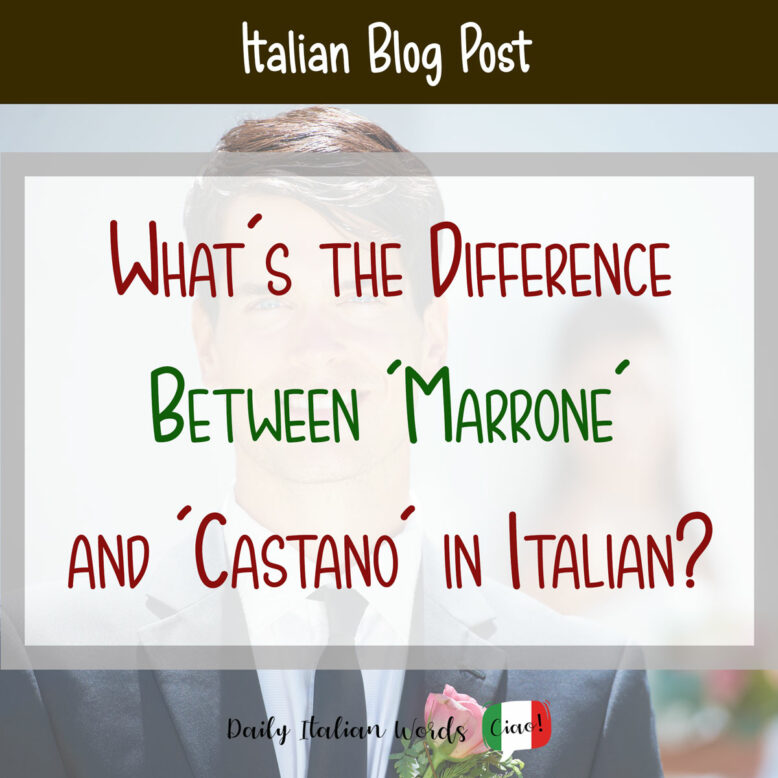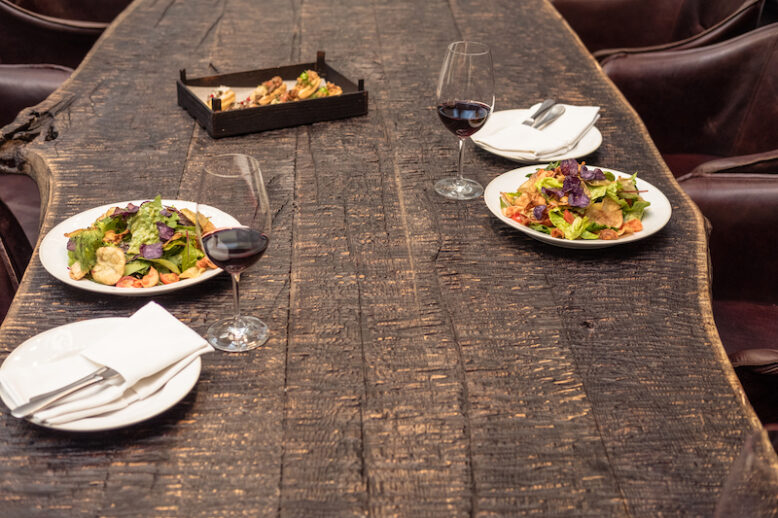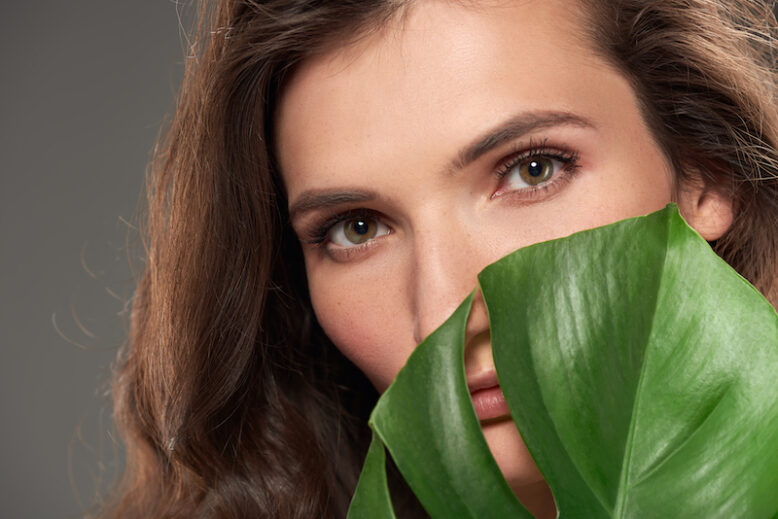Italians have various words to describe brown, but there are specific situations where using the appropriate term in the correct context is crucial to avoid sounding odd. This is especially true when discussing hair colour. Indeed, no one in Italy would ever say, “she has brown hair” (Lei ha i capelli marroni). Let me explain why.

How to Say ‘Brown’ in Italian
/mar·ró·ne/ – [marˈrone]
First and foremost, it’s essential to note that, in Italian, brown is commonly translated as marrone. Similar to English, marrone serves as the general term for the colour brown. In everyday conversation, this word is frequently used, particularly when referring to brown without specifying a particular shade.
Questo cane è marrone.
This dog is brown.
In one of the most respected Italian dictionaries, Treccani, marrone is defined as the characteristic brown of chestnut peels. This is likely the first association that comes to mind when someone mentions marrone. However, despite its widespread usage, marrone is not always perceived as the most precise (or flattering) descriptor in many situations.
And let’s not forget that for Italians, possibly due to their emphasis on fashion and style, details are highly significant. As a result, a variety of terms are used to describe different shades of color. For instance, when describing the colour of furniture in Italian, you could use:
- mogano (Mahogany): a dark reddish brown
- noce, noce chiaro / scuro (walnut, light / dark walnut)
- ebano (Ebony brown)
- bruno (same as brown)
- testa di moro (dark brown, but not as dark as ebony)
And many more, but you would rarely use the term castano, which also means brown. The closest translation in English would be chestnut, but it’s not quite the same.

‘Castano’ and When to Use It
/ca·stà·no/ – [kasˈtano]
Castano encompasses a range of brown variations. According to Treccani, this term typically denotes a lighter brown, akin to the hue of a ripe chestnut peel. However, its usage goes beyond this.
In Italian, castano is primarily used to describe the colour of certain body parts, specifically the eyes, beard, hair and body hair.
Giulia ha gli occhi castani.
Giulia has brown eyes.
Rarely is castano used to describe something else, and on occasion, doing so may sound odd or out of place.

Shades of Castano
In Italian, as mentioned earlier, castano refers to the colour brown, specifically used to describe hair and eye colour, reflecting the various shades of chestnut. This term encompasses a broad spectrum of brown shades, ranging from light to dark, highlighting the natural variations found in these features. Here are some common variations of castano:
- Castano chiaro: Light brown, often observed in hair and eyes, providing a soft, warm appearance.
- Castano scuro: Dark brown, a deeper and richer shade commonly found in both hair and eyes.
- Castano miele: Honey brown, a lighter, golden variant of brown, resembling the colour of honey.
- Castano dorato: Golden brown, similar to castano miele but with a more pronounced golden hue, giving it a sun-kissed look.
- Castano ramato: Auburn brown, a brown shade with a reddish tint, reminiscent of the colour of copper (ramato means “coppery”).
- Castano cioccolato: Chocolate brown, a rich, deep brown resembling dark chocolate.
Luisa ha i capelli color castano chiaro.
Luisa has light brown hair.
And if I use ‘castano’ in other contexts?
When referring to objects, foods, or other items that are brown, marrone is the preferred term. Using castano outside of describing hair or eyes might be understood from context, but it would sound unusual to a native speaker, as it specifically brings to mind the natural colours associated with chestnuts and, by extension, hair and eyes.
For example, describing wood or leather as castano might be understood due to the colour similarity with chestnut hair or eyes, but marrone would be the correct term to use.
What about ‘moro’?
Historically, moro was a term used to identify the habitants of Mauritania, an African country. It was also used to describe a person of colour.
Today, the word mainly refers to someone’s hair colour, and is the equivalent of dark brown or black. You can also use it for animals (e.g. un cavallo moro = a dark horse).
Conclusion
Viewed from this perspective, one could easily assume that Italian has a greater variety of colour names or even more colours than English. However, the perception of more or fewer colours in a language isn’t determined by the actual number of discernible colours, but rather by how each language classifies and names them.
For example, while English speakers may differentiate between blue and light blue in everyday speech, Italian offers blu for blue, azzurro for light blue, and celeste for sky blue, treating them as distinct primary categories. In fact, what Italians refer to as blu is equivalent to the English dark blue!
Similarly, as we’ve seen in this article, while English speakers use brown as a catch-all term, Italian speakers differentiate between marrone for general brown tones and castano specifically for chestnut brown, often in reference to hair or eye colour.
In terms of actual colour perception, humans generally perceive the same range of colours. However, the manner in which we label and categorise those colours can vary widely from one language to another.
What are your thoughts on this? Have you ever noticed this phenomenon while studying new languages? Let us know in the comments section below!

Fabio Guarino is a Linguist and Language Specialist who operates as a Freelance Content Writer and SEO Marketer. He considers himself fortunate to be able to blend his passion for his native language, Italian, along with English and Spanish, with his career.


